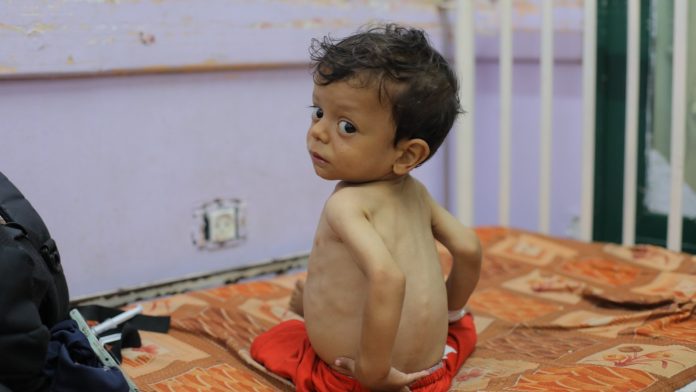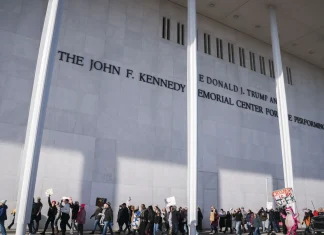
Gaza’s Famine: A Man-Made Catastrophe Unfolding Before Our Eyes
Imagine waking each day with a gnawing emptiness, not just in your stomach but in your heart—knowing that every morsel denied to you, every aid convoy turned away, is not a result of nature’s cruel hand but of human decisions made kilometers away. This is the grim reality facing the people of Gaza today, a besieged strip of land where famine isn’t an unfortunate consequence of war—it’s a deliberate strategy.
The United Nations Security Council recently witnessed a crossroads where 14 of its members stood united, demanding an immediate ceasefire and the lifting of all restrictions to allow life-saving aid into Gaza. The glaring exception? The United States, which abstained, highlighting deep divisions in international responses to this humanitarian nightmare.
Starvation as a Weapon—A Forbidden Weapon
On the ground, the reality in Gaza is harrowing. The Integrated Food Security Phase Classification (IPC), a global monitor of hunger, declared this month that Gaza is enduring a famine that is unequivocally “entirely man-made.” Volker Turk, the UN’s human rights chief, left no room for doubt: this famine is the direct outcome of policies enforced by the Israeli government.
“Using starvation as a tool of war is explicitly banned under international humanitarian law,” stressed Liana Hassan, an aid worker who has witnessed the crisis firsthand. “Yet here we are, watching people slowly die because access to food, fuel, and medicine is being withheld.”
The Security Council’s growing chorus implores for an immediate, unconditional, and permanent ceasefire. Their joint statement is a clarion call for the release of all hostages held by Hamas and other groups and an emphatic demand for Israel to immediately end all restrictions on aid deliveries.
From Dublin to London, the urgency resonates. Ireland’s Mission to the UN reiterates its “strong support” for these measures. Meanwhile, Britain’s UN ambassador Barbara Woodward delivered a firm demand to Israel: “Lift your restrictions now. Let food, medical supplies, and fuel reach those in desperate need. Blockades and sieges must end.”
The Battle for Gaza City: Tanks, Bombs, and Displacement
On the darkest edges of Gaza City, the nightmare deepens. Israeli tanks, advancing overnight into the Ebad-Alrahman neighborhood on the city’s northern rim, have razed homes and shattered lives. The thunder of artillery left residents scrambling for safety, escaping into the maze of Gaza’s labyrinthine streets.
“The explosions were getting louder and louder,” recalls Saad Abed, a sixty-year-old former construction worker sheltering about a kilometer from the frontline. “Suddenly, people came running into our area with panic in their eyes—they were being chased by tanks.”
Nearer to Jabalia, a bustling refugee center, Hamad al-Karawi recounts a chilling order delivered by drone: evacuate immediately or face the consequences. “We scattered onto the streets, homeless in a place with nowhere to go,” he says.
Gaza’s civil defense agency reports that at least 24 people lost their lives today alone in a relentless chain of airstrikes and gunfire. Half of Gaza’s two million inhabitants cram into Gaza City, often the last refuge amid ruins. Israel has warned civilians they must evacuate south, but religious leaders insist many will stay put.
“Leaving Gaza City isn’t an option—it’s a death sentence,” said Father Elias, a Greek Orthodox priest. Along with nuns and clergy, he has vowed to stay, tending to those who seek sanctuary in churches and compound shelters. “Our duty is to stand with our people in their darkest hour.”
The Human Toll and the War’s Deadly Legacy
Since October 2023, Gaza’s health ministry tallies over 62,000 Palestinian lives lost, a figure the United Nations has verified as credible despite politicized narratives. The war erupted on October 7 when Hamas-led militants launched a fierce attack inside Israel, killing 1,200 people and seizing 251 hostages, figures from Israeli sources indicate.
The retaliation was swift and crushing. Israeli forces intensified airstrikes and imposed a suffocating blockade, triggering one of the gravest humanitarian crises of our time— Gaza crippled, displaced by the millions, and left to grapple with profound loss.
Among the casualties—devastatingly—are those who succumb not directly to violence but to starvation. Ten more deaths linked to malnutrition were confirmed recently, raising the death toll from hunger-induced causes to 313, including 119 children. Each number is a heartbreaking story, a child’s life cut short by deprivation engineered by blockade and conflict.
Behind Closed Doors: Trump, Kushner, Blair, and the Elusive Quest for Resolution
Thousands of miles away, in the polished halls of Washington, the war’s fate is being debated by figures of monumental influence. Former President Donald Trump convened a high-level meeting featuring his son-in-law Jared Kushner—once a key Middle East envoy—and former British Prime Minister Tony Blair.
A senior White House official described this gathering as a “policy meeting,” yet the stakes could not be higher. The agenda spans the full spectrum of the Gaza crisis: escalating aid deliveries, the hostage situation, and post-war reconstruction plans.
“We’re developing a comprehensive plan for the post-conflict period,” stated Steve Witkoff, the US special envoy, in a recent Fox News interview. “It’s robust, well-meaning, and reflects humanitarian motives.” But for Gazans starved, bombed, and displaced, plans on paper might feel distant from the rubble beneath their feet.
Trump had vowed during his last campaign to swiftly end the war. Yet seven months into his second term, peace remains elusive. A fragile ceasefire from early 2024 shattered in March when Israeli strikes claimed hundreds of Palestinian lives, unraveling months of tenuous calm.
Images of starving Palestinian children have shocked the conscience of the world, fueling a surge of criticism against Israeli policies from activists, humanitarians, and countries alike. Yet, diplomatically, the path remains fraught with complexity—a tangled web of historical grievances, security concerns, and geopolitical chess.
What Can We Do? A Moment to Reflect
Standing at this juncture, we as global citizens must confront uncomfortable truths. What does it say about our world when famine can be engineered, when hunger is wielded as a weapon? How do we reconcile the noble ideals of international law with the harsh realities on the ground?
As you read this, remember the streets of Gaza City—once vibrant marketplaces, neighborhoods where families celebrated weddings and birthdays—now echo with the sounds of explosions and fear. The question isn’t just who wins or loses a battle but how humanity can prevail.
We can raise our voices, demand transparent aid corridors, support organizations delivering relief, and hold our leaders accountable. The famine in Gaza is not a distant headline but a human tragedy demanding urgent action.
In Closing: Humanity on the Line
The crisis in Gaza is a testament to the heartbreak of war’s shadow—a man-made famine unfolding where hope once blossomed. For those trapped in the crossfire, survival is framed by the cruel calculus of politics and power.
Will the international community rise to meet this moral challenge? Can diplomacy break the siege and allow life to return to Gaza’s streets? And, crucially, can empathy triumph over enmity?
For Gaza’s two million souls, the answer is not just a matter of politics—it is a matter of life or death. And for all of us, watching and reading from afar, it is a call to remember our shared humanity, to stand in solidarity, and to never accept starvation as a weapon in any war.









